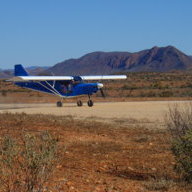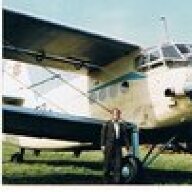There was the unfortunate case of an early model Skyfox hired to a Solo Student, who practiced his left & right turns, after doing a prolonged turn, he noticed one wing tank was empty, thinking he will not make it back to base, he decided to put it down in a paddock, resulting in substantial damage to the aircraft. Tears.
I remember in California a pilot did a refuel the night before his flight so he could get away first light in the morning.
The fuel gauges read back to front, that is, when Full, the needles went to the left!
However someone observed the refueling, and when the pilot left, the thief emptied both tanks resulting in the fuel gauge needles going all the way to the right. (which on most aircraft would indicate full fuel.)
The next morning the Pilot did not pick this up in his checks as he knew he had refuled the aircraft the night before. The result was tears.
Need to be careful not to slip into the habit of doing checks robotically.
Take your time and actually look at the item you are checking.
A Chief flying Instructor in N.Z. Ardmore, was caught out doing what he always told his students never to do, that is to assume an item is checked without actually checking it.
Both of us got into a PA 28 (I was converting my Oz PPL to a NZ PPL.) The CFI said "I will show you how to get to the other end of the field, it was a long taxi around with numerous clearances, he did the take off checks, and when it came to FUEL ON, he touched the tap on the floor, but did not actually look at the taps position-( it was in the OFF position.) So after our run up, we line up, got our take off clearance, full power, then just about lift off, the aircraft pulled firmly to the right, then the engine quit!
We narrowly avoided hitting the base of the Tower and ended up off the strip on the grass.
Post flight analysis.
After 20 minutes of searching for the problem the CFI found the fuel tap in the OFF position.
There were many expletives used, which are not printable, but the CFI said the School has a policy of never turning the FUEL OFF during the day, only at the last flight of the day.
Well that solved why the engine quit, but what caused the Piper to firmly turn to the right at lift off?.
Another 20 minutes of investigating control surfaces etc, etc, the problem was located in the cockpit.
This Piper Cherokee had an auto Pilot fitted and the ON /OFF switch was on the panel directly in front of the throttle. So when you applied full forward, throttle, your knuckles hit the front panel and turned the Auto Pilot ON .
The bug on the Auto Pilot was on a setting to the right of the runway heading, so as the aircraft was ready the leap into the air the Auto Pilot was ready to turn onto the preset heading.
The diagnosis was correct, the problem was in the cockpit. The Pilot in command.!
No one hurt and no damage, except for some pride perhaps.
But it could have ended up differently.
The long taxi to the other end of the field certainly was a factor, had we taken off at the Club House end of the main runway we would have had fuel exhaustion past the point of no return.
So it can happen to the best of us.!
And don't trust something because its brand new.
A new Aircraft was being assembled at the airfield by its happy owners.
By mid day all was ready for start up, after several attempts the Rotax fired, the aircraft was tied down and the throttle set to idle.
The motor was left running, whilst maps, headings, weather, was checked and rechecked, and periodically the CHT was checked, all was fine.
First leg of the trip was Camden to Mudgee across the Blue Mountains.
Then suddenly after about half an hour the engine suddenly stopped!!
The next day it was found to have aluminium shavings in the fuel line!!
If they had taken Off immediately after assembly, they probably would have come down around Katoomba in Tiger country.
My saying is that you may not always get into the air, but if you do, one thing is for sure, you will always come back down again, and how that will happen largely depends on the Pilot in Command.
Cheers, stay alive and fly safe.

 Hi Drew and yes not a bad part of the country to live in and the Casino strip been shorten a fair bit so the hump has become more of a hollow now. Ces & Alf names is not familiar to me as I've only been flying for about 10yrs now. I know a few in the Aeroclub would know them and 1 would be George Sommerville who was the Cfi for many moons. Cheers Guy.
Hi Drew and yes not a bad part of the country to live in and the Casino strip been shorten a fair bit so the hump has become more of a hollow now. Ces & Alf names is not familiar to me as I've only been flying for about 10yrs now. I know a few in the Aeroclub would know them and 1 would be George Sommerville who was the Cfi for many moons. Cheers Guy.







